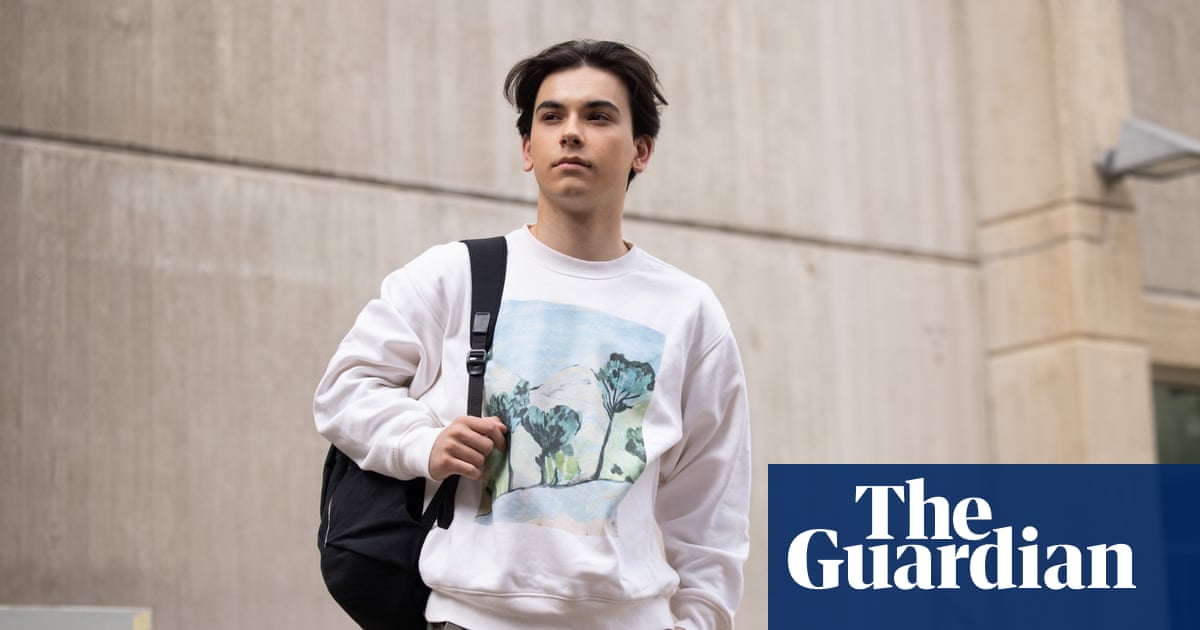Owen Magee knew how high his student loan would be if he enrolled in an arts degree – he saw the headlines in 2020, when he was still in early adolescence.
But measures introduced by the former Morrison government that doubled the price of some degrees to incentivise students into other courses didn’t dissuade him, nor did recent cost-of-living increases.
“I decided I’d prefer doing something I’m interested in,” the 18-year-old says of his decision to study a media and arts degree at the University of New South Wales.
“A lot of young people are moving away from conventional ideas of education and the workforce to pursuing things we genuinely enjoy in life.
“We know what’s best for us – we’re willing to stand up and say ‘this is our future, we’re not going to allow our lives to be dictated’.”
Data provided to Guardian Australia shows Magee is not alone. Students are flocking to arts degrees in record numbers despite a 113% rise in student contributions for communications, humanities and society and culture degrees, implemented as part of the widely condemned Job-ready Graduates (JRG) scheme.
It’s equivalent to $16,323 a year, or about $50,000 for a three-year degree.
Despite the spike, Australia’s largest universities including UNSW, the University of Melbourne, the University of Sydney and Monash have all experienced a jump in applications for arts degrees, leading to higher enrolments.
At the University of Melbourne, demand for its Bachelor of Arts degree is higher in 2024 than any time in the past five years.
It’s had a 14% surge in the number of first preferences for the bachelor program since 2022, while enrolments have also jumped since 2021, rising from 1,597 to 1,641 this year.
Monash University has seen first preferences for arts degrees rise by 11% since 2021. Enrolments jumped almost 2% this year, at the same rate as the University of Sydney, which has consistently grown its arts enrolments since the JRG reforms were introduced.
Prof Claire Annesley, dean of arts, design and architecture at UNSW, says there has been a “massive swell” of students choosing degrees in her faculty.
First preferences for arts degrees surged by 14% at UNSW this year, while the student course load was also up.
“I think they can see the future better than we can,” she says. “This generation of young people will be creating jobs you and I can’t imagine – and industry knows that as well.”
The latest graduate outcomes survey reported the largest increase in employment rates in the field of humanities (up from 81.7% in 2021 to 86.6% in 2022).
Median graduate salaries also jumped, sitting at $66,700 compared with sciences and mathematics at $66,000 and business and management $65,000.
In the unknown future of AI, Annesley says humanities offer skillsets that can’t be replaced by emerging technology. Complex societal problems – from the climate emergency to the pandemic – need effective communicators and policymakers.
“AI can reproduce what we already know, but creativity is an innately human skill,” she says.
“Right now we’re penalising people we need to be part of the business of innovation and core solutions. There’s an urgency here.”
The CEO of Universities Australia, Luke Sheehy, says JRG “failed” to encourage students into certain disciplines and instead shifted additional costs on to students and universities.
According to the University Admissions Centre (UAC), which manages applications for New South Wales universities, 21% of first preferences were directed to society and culture degrees in the most recent intake, with roughly the same number of offers provided.
The most popular courses were a Bachelor of Arts at the University of Sydney and a Bachelor of Double Law at UNSW.
The figures are nearly identical to 2021. Yet in the same period, first preferences to health, historically the most popular study area, have reduced (28% to 25%), as year 12 applicants have turned to arts degrees in higher numbers.
“We’ve already called and will continue to call on government to prioritise student support measures in the forthcoming budget,” he says.
The Universities Accord final report recommended JRG needed “urgent remediation”, adding it had “significantly and unfairly increased what students repay”.
The education minister, Jason Clare, told Guardian Australia the government would respond to the recommendations in the accord “shortly”.
But to Magee, the further into his course he gets, the more concerned about his economic future he becomes.
“Down the road, my student debt will take a lot of my income … it worries me,” he says.
“The government should be encouraging students to find paths they enjoy, not restricting it.”

